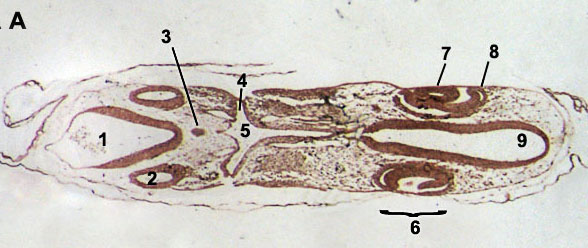
96 Hour Chick Embryo Serial Section
Of 96 Hours Chick Embryo: 1. In the chick embryo of 96-hours of incubation, the entire body has been turned through 90 degree and the embryo lies with its left side on the yolk. At the end of 96 hours the body folds have undercut the embryo so that it remains attached to the yolk only by a slender stalk. Chicken: 33-36 h At about 33 hours after fertilization, the embryo is about 4 mm long and the first flexion of the originally straight embryo starts in the head region. The cranial flexure will be visible a few hours later.
At about 33 hours after fertilization, the embryo is about 4 mm long and the first flexion of the originally straight embryo starts in the head region. The cranial flexure will be visible a few hours later. At this stage 12 to 13 somites are formed.
Malayalam Serial Actresses Remuneration - Shocking Actresses Remuneration Subscribe for More Videos: metromatinee.com is the official. Skip navigation Sign in. Malayalam serial actress salary in Television Serial Industry These rates of Serial actors, actress in Kerala is based on report few months back in 2017. There might be few changes for salary scales of celebrities in Malayalam Television serial industry during 2018. Malayalam actress photos. Serial Actress Roopa Sree Salary 30000 – 40000 Rs/Day Shot (Chandana Mazha Serial actress salary) Sajan Surya – Serial actor Remuneration /Salary- 36000 – 45000 Rs/Day Shot (Bharya Asianet serial actors salary).
The eye vesicles are rather large. The forebrain vesicle or prosencephalon will divide, the midbrain vesicle or mesencephalon remains undivided while the hindbrain vesicle or rhombencephalon will form a series of smaller neuromeres. The sinus rhomboidalis (diamond-shaped) is still present as the only opening of the neural tube and the primitive streak is only rudimentary. The infundibulum (= derived from the diencephalon) appears as a half circular structure at the ventral side of the caudal part of the forebrain. Stronghold crusader 4 download utorrent. The notochord or chorda dorsalis ends just behind this ventral vesicle.

Later on, 36 hours after fertilization, the heart, which has a bilateral origin in the mesodermal layer, is a S-shaped tube which protrudes to the right of the embryo (in upper view). Outside, in the area vasculosa (= forseen of blood vessels) the formation of blood islands continues. The primitive streak can only still be discerned below the sinus rhomboidalis.
Early embryonic developmental features that are shown on this page: • Whole mount preparation 33 hours () • Whole mount preparation 36 hours () • Cross sections 36 hrs; formation of eye, heart and intestines ( ) Stage 33 hours Information: At about 33 hours after fertilization, the embryo is about 4 mm long and the first flexion of the originally straight embryo starts in the head region and the cranial flexure will be visible a few hours later. At this stage 12 to 13 somites are formed. The eye vesicles are rather large. The forebrain vesicle or prosencephalon will divide, the midbrain vesicle or mesencephalon remains undivided while the hindbrain vesicle or rhombencephalon will form a series of smaller neuromeres. The sinus rhomboidalis (diamond-shaped???) is still present as the only opening of the neural tube and the primitive streak is only rudimentary. The infundibulum (= derived from the diencephalon) appears as a half circular structure at the ventral side of caudal part of the forebrain. The notochord or chorda dorsalis ends just behind this venral vesicle.
Embryology of chicken 33 hours after fertilization: stained whole mout preparation 1 = Proamnion, 2 = Prosencephalon, 3 = Mesencephalon, 4 = Rhombencephalon, 5 = Somite, 6 = Eye vesicle, 7 = Foregut, 8 = Chorda (translucent), 9 = Heart, 10 = Lateral mesoderm, 11 = Spine, 12 = Sinus rhomboidalis, 13 = Primitive streakp, 14 = Blood islands Dorsalview and longitudinalsection at 33 hrs according to Patten Patten, B.M. The Early Embryology of the Chick. Philadelphia: P.
Blakiston's Son and Co. Stage 36 hours Information: 36-hours after fertilization, the heart is a S-shaped tube which protude to the right of the embryo (in upper view). The further development of the heart is now mesodermal. Outside, in the area vasculosa (= forseen of blood vessels) the formation of blood islands continues. The primitive streak can only still be discerned below the sinus rhomboidalis.
This membrane is made up of a bladderlike median ventral diverticulum of the hindgut endoderm, covered with splanchnic mesoderm. It connects with the hindgut, which will be found only in sections posterior to the posterior intestinal portal at this stage of development. Ultimately, this double membrane will fill the exocoel, and its outer layer of mesoderm will fuse with mesoderm of the chorion and the aminion and finally with the splanchnic mesoderm of the yolk sac splanchnopleure. Its function in the chick is related to respiration and excretion. The entire outer covering of the chick embryo is of ectodermal origin and is made up largely of squamous epithelium but will later also include horny scales, feather germs, quills and barbs, claws, beak coverings, and a temporary eggtooth. By evaginations from the surface, the linings of the following structures are also derived from ectoderm: the mouth (stomodeal portion and stomodeal hypophysis); cloaca (proctodeal portion); visceral clefts (peripheral halves); nostrils; eye chamber and lens; otic vesicles; and external auditory meatus.